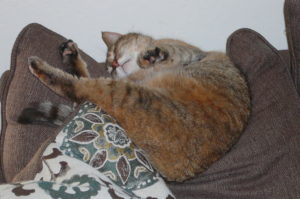As professional editors and writers, Robyn and I have attended many conferences and writer events. Those, combined with the wide variety of edits we’ve done, have shown that many writers, especially first-time writers, have little experience with editing.
Questions we often hear are:
- Why do I need an editor?
- What is an editor going to do that I can’t do?
- What is a developmental edit?
- I have spell check, why do I need an edit?
- Why are there so many types of editing?
- What is proofreading?
- Why is editing so expensive?
And on and on and on.
In response, we’ve tried to address as many of these questions as possible in our Editing Untangled Workshop and related blogs.
***
Just as important, however, is understanding the overall editing process – the sequence in which each edit step is performed and what it is intended to accomplish.
In this blog we’ll briefly talk about each of the editing steps, when it should take place in the editing process and why. We’ll also explain what happens if it is performed out of sequence.
Some of the things we include may not normally be considered as part of the editing process but in fact, they are. For example, lets start with beta reading.
Beta Reading
For many authors, beta reading is not normally considered to be a part of the editing process, but it is. It’s actually a very important part of the editing process.
Beta readers can come in many forms: friends, family, a writing partner, a critique partner or a critique group. In short, anyone who you can get to read your work, at any stage that makes sense, and someone who will give you honest feedback.
(We should mention that you’ll hear terms like, alpha readers, review groups, beta critique groups and on and on. To us, whatever you call them, beta readers are simply the first to read your work before it is edited.)
Typically, there are no rules as to when beta reading can be done. It’s whatever you and your beta readers agree on and can start at any point in your writing.
For example, when Bob was writing his first book, he formed a beta reading group, consisting of four to five friends, who met at his house every Sunday morning for coffee and ice cream. (Yes, bribery plays a big role. Especially if your writing sucks: Which it will until your beta readers steer your story in the right direction.)
The first Sunday meeting was to agree on the rules and find out what flavor ice cream everyone liked. Then, once he had written several chapters, he passed them out at the next meeting. (Yes, the ice cream came with no obligations for this meeting.) From then on, each Sunday everyone would tell him how wonderful his writing was. (He wishes.)

Beta Read Meeting in Progress
Actually, the comments were more like: “Your hero fireman Shawn is the biggest woose I’ve ever seen.”, “Get real! No woman would ever let him jump her bones that fast.”, “It’s obvious you know nothing about horses. You’ve got her getting on the wrong side of the horse.” (Uh, there’s a right side and a wrong side???)
And on and on it went. While they read the next several chapters, Bob fixed the ones from the previous Sunday; after wiping the ice cream stains off their notes.
Two rules about beta reading that we think are important:
- You should never have to pay beta readers. Bribery is okay but pay is not.
- Beta readers should be reading the story for content only, not checking grammar, spelling, punctuation or formatting. Why? Because they’re not editors. Also, your story is raw, and while they’re reading the next part, you should be fixing what they just tore apart. So, all that effort is just a waste of time.
The key things you’re testing here are reader appeal and does your overall story make sense.
Developmental Edit
Similar to beta reading, developmental editing deals primarily with the story and its structure. It is a professional review of your overall story for structure, plot development, character development, scene descriptions, dialogue and other story elements that you’ve used to bring your story to life.
Obviously, developmental editing cannot be done until your story is complete. It also should be done by a professional editor, or at least someone who understands story structure and the role each story element plays.
Simply put, developmental editing concentrates on helping you develop and keep true your story, your characters and your scenes.
When we do a developmental edit we work with the author to provide guidance and feedback by critiquing the following areas:
- Structure
- Characterization/character arcs
- Goals, motivation, conflict
- Correct point of view
- Show don’t tell
- Plot
- Pace
- Genre specific and appropriate form
- Believable and genre specific dialog
- Balance between narrative and dialog
- Scene descriptions
Depending on how solid the story is, some line editing can be combined with a developmental edit. However, it makes no sense to do line editing on a story that’s been kicked back to the author for major rewrites.

If your story looks like this, it’s not ready for a line edit
Line or Copy Edit
If you’ve been following our blogs, you know that a copy or line edit is performed on what the writer believes to be a completed manuscript and is a line-by-line check of the author’s work.
Line editing can be light, medium or heavy, depending on what state the manuscript is in. A clean self-edited manuscript would likely need only a light line edit. Whereas a manuscript the writer is uncomfortable with will need a deeper, heavy line edit to help finish developing the story as well as fixing things.
Typically, a medium line edit, and its depth, will fall somewhere in between, depending on what the editor finds during their initial manuscript evaluation.
Things the editor will make sure are correct and proper for each type of line edit are:
- Light
- Spelling
- Punctuation
- Grammar
- Capitalization
- Number usage
- Abbreviations
- Typographical errors
- Omitted or repeat words
- Overall story accuracy
- Medium – A light edit plus:
- Consistency of American or British English, colloquialisms, accents
- Sentence construction and run on sentences
- Elimination of unnecessary words
- Syntax
- Proper and consistent tense
- Overused words and adverbs, clichés, purple prose
- Logic or plot holes
- Character/time inconsistencies
- Style sheet/guide adherence (if applicable)
- Heavy or Full – A light edit, necessary elements from a medium edit and suggestions for:
- Cuts
- Additions
- Rewrites
- Revisions to unclear passages
- Replacement words
- Rearranged sentences and scenes

Still not sure?
Here again it makes no sense to do a line edit on a manuscript that is not complete. Even in a heavy edit, it’s not the overall story that’s being changed, but parts of it being brought into line or clarified. Also, after each part is changed, the editor will check it for all the elements of a light and medium edit.
The point being that, once again, it makes no sense to perform a light or medium line edit on a changing story line.
Proofreads

Once the editing is done, it’s time for you to relax and let us do a proofread.
Proofreading is the final review on your completely edited manuscript. You know, the one you’ve hashed over, revised and tweaked on just about every page.
And, because of the changes, we need to go back and check for:
- Typographical errors
- Punctuation
- Grammar
- Spacing
- Print quality and font consistency
- Sufficient white space – margins, paragraph spacing, indenting.
It’s the final check to make sure your manuscript’s completely error-free and print ready.
Summary
So, why are we harping on this when most of it has been in our blogs and, by now, we’re quite sure you’re tired of hearing it?
Because our next edit request may likely be someone who wants us to proofread their manuscript while it’s being line edited. That way, they can save time.
Or, they’re still not happy with their story but they want us to do a line edit so they can see what type of errors they’re making.
Or, they want to know which of the following punctuation is correct.
- Oh no you don’t!
- Oh, no you don’t!
- Oh no, you don’t!
(Hint – They’re all correct. But without knowing the context it’s being used in, it’s impossible to say which one they should use.)
Or, the author wants us to do all the edits at once because they want to enter their story in a contest – next week.
These are the types of requests we get. And while we do our best to explain that doing things out of sequence often negates the purpose of the edit, we’ll continue to try work with you and help you stay within the edit process as best we can.
***
So, what should you the author do? Simple, take a few minutes to understand each of the steps in the edit process and try, as best you can, to have them done in the proper sequence.
Not sure of what kind of repeat errors you might be making or what kind of edit(s) your work needs? Ask us to have a look and do a sample edit. Unsure of something like the above “Oh no you don’t!” example? Give us a shout out and we’ll try and help put you on the right path.
Finally, while we’ve pulled off a few miracle edits recently, please allow us enough time to do a proper edit, especially if you’re a first-time author. It’s always our goal to make everything we touch the best it can possibly be! But that takes time.
Happy writing,
The Writing Allsorts Team
Bob and Robyn
***
Bob Boze lives in the South Bay area of San Diego and his writing partner, Robyn Bennett, lives in Blenheim on New Zealand’s South Island. Both are members of the San Diego Writers and Editors Guild, Romance Writers of America and New Zealand, as well published romance and non-fiction authors, editors, speakers and bloggers. Together they have over twelve published works and are collaborating on several more novels, short stories, articles and other works.
Bob and Robyn also offer a variety of writer and business services through their business website, Writing Allsorts. To learn more about them, their published works and the services they offer, go to https://writingallsorts.com/


